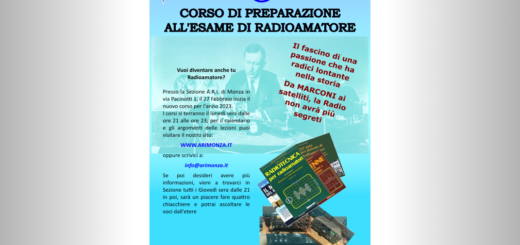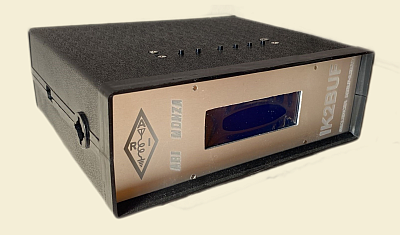contatto 8 giugno 2019
ARISS school contact planned for Olomouc, Czech Republic
An International Space Station school contact has been planned for Nick Hague KG5TMV with participants at House of Children and Youth, Olomouc, Czech Republic. The event is planned Saturday June 8, 2019.
The event is scheduled to begin at approximately 13:05 UTC, which is 15:05 CEST.
The contact will be a direct between OR4ISS and OK2KWX, located in Czech Republic. The downlink signals will be audible in parts of Europe on 145.800 MHz
Moreover, the event will be webcast on:
https://www.youtube.com/user/HUHUCOCTAILcz/live
School presentation
Dum diti a mladeze Olomouc (eng.: House of Children and Youth, abbr. DDM Olomouc) – a leisure time center which operates in 5 buildings, whereas four are situated in Olomouc. Since April 2001 the DDM is constituted by Olomouc Regional Authority. For the whole public DDM offered both regular clubs and interest groups as well as occasional and stay events.
Over 150 interest groups started to work every year, regularly – once, twice or three times a week – attended by 2602 children and youth at the age from 3 to 25 years only during the last school year (2017/2018). These activities were provided by 150 employees, external and voluntary workers.
During the summer holidays, DDM Olomouc organized more than 30 summer camps for almost 800 children. In summer furthermore, as during the whole year, DDM Olomouc offers cheap accommodation both right in Olomouc and in Ochoz u Konice both locations are up to 30 km away from Olomouc.
Students Questions:
1. Jakub (13): How many solar panels are powering the entire station and do you have any other power sources?
2. Jonas (11): What voltage are your instruments using aboard the ISS?
3. Jan (14): What would you tell the people who believe that the Earth is flat?
4. Filip (12): How often do you check the social networks and have you any time to watch Youtube?
5. Anna (11): Did the ASTROBEEs already arrive and do you use them already?
6. Michal (15): How far from the station can you go and can you move outside untethered?
7. Ales (13): How long does it take to get from Earth to the ISS?
8. Simon (11): What does being in a spacesuit feel like and what is the outside temperature?
9. Antonin (14): How long do the spacesuit’s energy and oxygen supplies last?
10. Jiri (12): Do you feel any changes to your muscular system during your mission, or is it a bit of a shock after your return back to Earth?
11. Johana (11): Do you need to strap in when you sleep and how do you enjoy sleeping in zero gravity?
12. Tomas (11): How often do you eat and do you enjoy the taste of the food?
13. Jan Se. (15): Have you experienced any accidents while on the station, for example, a device failure?
14. Jan St. (15): How do you fight a fire if it breaks out onboard the ISS?
15. Michael (12): How much waste is generated on the ISS and what are you doing with it?
16. Franta (12): Can you play any computer games and how much free time do you have?
17. Ondrej (15): What does it feel like to fly a rocket up into space?
18. Vaclav (13): How much time do you spend exercising each day?
19. Max (14): How would you deal with a serious injury, for example, hand fracture?
20. Matej (11): How and how often do you communicate with your family?
About ARISS:
Amateur Radio on the International Space Station (ARISS) is a cooperative venture of international amateur radio societies and the space agencies that support the International Space Station: NASA, Russian Space Agency, ESA, JAXA, and CSA. The US Center for the Advancement of Science in Space (CASIS) and the National Aeronautics and Space Administration (NASA) provide ARISS special support.
ARISS offers an opportunity for students to experience the excitement of Amateur Radio by talking directly with crewmembers on board the International Space Station. Teachers, parents and communities see, first hand, how Amateur Radio and crewmembers on ISS can energize youngsters’ interest in science, technology, and learning.
The primary goal of ARISS is to promote exploration of science, technology, engineering, and mathematics (STEM) topics by organizing scheduled contacts via amateur radio between crew members aboard the ISS and students in classrooms or informal education venues. With the help of experienced amateur radio volunteers, ISS crews speak directly with large audiences in a variety of public forums. Before and during these radio contacts, students, teachers, parents, and communities learn about space, space technologies, and amateur radio. For more information, see www.ariss.org, www.ariss-eu.org and https://www.amsat-on.be/hamtv-summary/.
An International Space Station school contact has been planned for Nick Hague KG5TMV with participants at House of Children and Youth, Olomouc, Czech Republic. The event is planned Saturday June 8, 2019.
The event is scheduled to begin at approximately 13:05 UTC, which is 15:05 CEST.
The contact will be a direct between OR4ISS and OK2KWX, located in Czech Republic. The downlink signals will be audible in parts of Europe on 145.800 MHz
Moreover, the event will be webcast on:
https://www.youtube.com/user/HUHUCOCTAILcz/live
School presentation
Dum diti a mladeze Olomouc (eng.: House of Children and Youth, abbr. DDM Olomouc) – a leisure time center which operates in 5 buildings, whereas four are situated in Olomouc. Since April 2001 the DDM is constituted by Olomouc Regional Authority. For the whole public DDM offered both regular clubs and interest groups as well as occasional and stay events.
Over 150 interest groups started to work every year, regularly – once, twice or three times a week – attended by 2602 children and youth at the age from 3 to 25 years only during the last school year (2017/2018). These activities were provided by 150 employees, external and voluntary workers.
During the summer holidays, DDM Olomouc organized more than 30 summer camps for almost 800 children. In summer furthermore, as during the whole year, DDM Olomouc offers cheap accommodation both right in Olomouc and in Ochoz u Konice both locations are up to 30 km away from Olomouc.
Students Questions:
1. Jakub (13): How many solar panels are powering the entire station and do you have any other power sources?
2. Jonas (11): What voltage are your instruments using aboard the ISS?
3. Jan (14): What would you tell the people who believe that the Earth is flat?
4. Filip (12): How often do you check the social networks and have you any time to watch Youtube?
5. Anna (11): Did the ASTROBEEs already arrive and do you use them already?
6. Michal (15): How far from the station can you go and can you move outside untethered?
7. Ales (13): How long does it take to get from Earth to the ISS?
8. Simon (11): What does being in a spacesuit feel like and what is the outside temperature?
9. Antonin (14): How long do the spacesuit’s energy and oxygen supplies last?
10. Jiri (12): Do you feel any changes to your muscular system during your mission, or is it a bit of a shock after your return back to Earth?
11. Johana (11): Do you need to strap in when you sleep and how do you enjoy sleeping in zero gravity?
12. Tomas (11): How often do you eat and do you enjoy the taste of the food?
13. Jan Se. (15): Have you experienced any accidents while on the station, for example, a device failure?
14. Jan St. (15): How do you fight a fire if it breaks out onboard the ISS?
15. Michael (12): How much waste is generated on the ISS and what are you doing with it?
16. Franta (12): Can you play any computer games and how much free time do you have?
17. Ondrej (15): What does it feel like to fly a rocket up into space?
18. Vaclav (13): How much time do you spend exercising each day?
19. Max (14): How would you deal with a serious injury, for example, hand fracture?
20. Matej (11): How and how often do you communicate with your family?
About ARISS:
Amateur Radio on the International Space Station (ARISS) is a cooperative venture of international amateur radio societies and the space agencies that support the International Space Station: NASA, Russian Space Agency, ESA, JAXA, and CSA. The US Center for the Advancement of Science in Space (CASIS) and the National Aeronautics and Space Administration (NASA) provide ARISS special support.
ARISS offers an opportunity for students to experience the excitement of Amateur Radio by talking directly with crewmembers on board the International Space Station. Teachers, parents and communities see, first hand, how Amateur Radio and crewmembers on ISS can energize youngsters’ interest in science, technology, and learning.
The primary goal of ARISS is to promote exploration of science, technology, engineering, and mathematics (STEM) topics by organizing scheduled contacts via amateur radio between crew members aboard the ISS and students in classrooms or informal education venues. With the help of experienced amateur radio volunteers, ISS crews speak directly with large audiences in a variety of public forums. Before and during these radio contacts, students, teachers, parents, and communities learn about space, space technologies, and amateur radio. For more information, see www.ariss.org, www.ariss-eu.org and https://www.amsat-on.be/hamtv-summary/.






